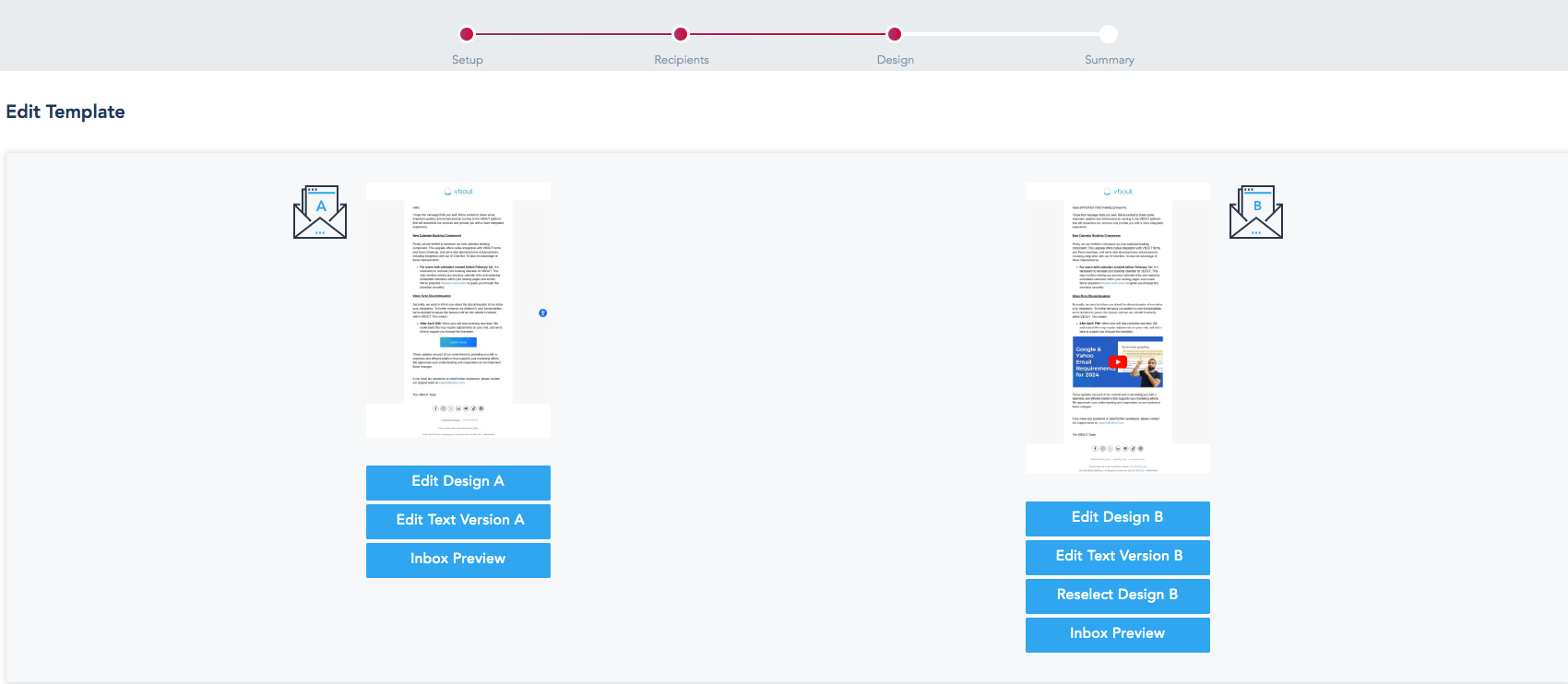Are you looking for effective ways to increase your email conversion rates or drive more engagement? A/B testing could be one of the solutions for the improvement you need. According to 99firms, more than 50% of marketers use A/B testing to boost conversions.
This method involves creating two versions of your emails to see which one better drives better results.
To discover how to use A/B testing to increase your conversion rates, here’s a structured approach:
- Purpose: Clearly define the objective of your A/B test. Are you aiming to increase your email open rates, get more click-throughs, or drive conversions? Determine your goal before diving in.
- Variations: Run your test by comparing two versions simultaneously. This head-to-head comparison will generate the most informative results.
- Element Selection: Choose one distinct element to vary between your two versions. This isolates the change, helping you identify exactly what impacts conversion rates.
Consider these variables for A/B testing:
- Email Subject Lines: Captivate your audience with compelling subject lines.
- Sender’s Name: Test different ‘From’ names to see which builds trust.
- Sender’s Email: Test different “Emails” to determine which performs better.
- Content Variations: Explore alternate titles, banners, templates, texts, and call-to-actions…
Each of these elements can influence your contact’s behavior. For instance. a well-crafted subject line or a relatable sender name may entice your recipient to open your email.
Here’s how you can streamline your A/B testing process.
1. Decide What to Test
Choose a component like the subject line, the ‘from’ name, or sender’s email address.

2. Choose Your A/B type
Set the percentage of your email subscribers for each version.

The screenshot above is just an example showing the percentages you can select for testing. If you choose to send to 15% of Group A and 15% of Group B, the remaining 70% will receive the winning version of the test depending on which group shows better engagement.
3. Define Segments
Decide what success looks like. Whether it’s open rates, click rates, full reads, or conversions, these metrics will help identify the winning version.
 It’s critical to note that although open rate is one of the metrics to measure the effectiveness of your subject lines, you need to be careful not to solely depend on this metric. Since the release of Apple’s Mail Privacy Protection, the importance of open rates has been debated. Marketers need to focus on other actionable metrics such as click-through rates, conversions, bounce rates, unsubscribe rates, or list growth rates to assess the overall performance of their email marketing campaigns.
It’s critical to note that although open rate is one of the metrics to measure the effectiveness of your subject lines, you need to be careful not to solely depend on this metric. Since the release of Apple’s Mail Privacy Protection, the importance of open rates has been debated. Marketers need to focus on other actionable metrics such as click-through rates, conversions, bounce rates, unsubscribe rates, or list growth rates to assess the overall performance of their email marketing campaigns.
4. Set Time to Determine the Winning Version
After finding your winner, schedule when the remainder of your subscribers will receive the winning email. You can start from one hour or more, but a good practice is to give it some time to get fair results after testing both groups equally.

A/B Testing Email Content
When A/B testing content variations, the steps are similar. However, there’s a wider range of sub-elements to test, such as CTA buttons, email content, social share buttons, template colors, and overall layout.
As for CTA buttons, visibility is key. Place them prominently so they’re easily found without much scrolling. Additionally, the CTA’s color should be inviting and complement the overall design of your page.
Here’s an example of testing two variants of an email campaign, one with a CTA and another with an image.

Implementing A/B testing is a powerful way to determine the performance of your email marketing campaigns and identify what element needs to be tweaked for improvement. If you haven’t started using A/B testing, now is the time to take advantage of this technique to improve your email marketing results.
Don’t forget to share this article


